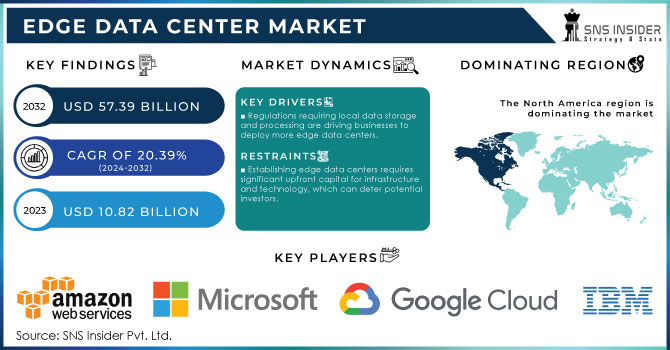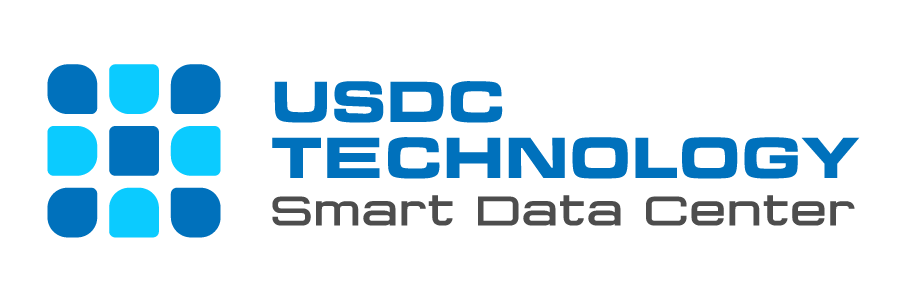As digital transformation accelerates globally, edge data centers are set to become critical infrastructure for businesses. Valued at USD 10.82 billion in 2023, the edge data center market is expected to skyrocket to USD 57.39 billion by 2032, growing at a robust CAGR of 20.39%. Data center experts and investors must stay ahead of market dynamics to seize emerging opportunities in this rapidly evolving sector.
1. Key Growth Drivers
Rising Demand for Low-Latency Data Processing
With an estimated 50 billion IoT devices connected by 2030, edge data centers will be essential for handling data with minimal latency. By processing information closer to its source, edge centers eliminate delays associated with large centralized data centers. This is crucial for applications like autonomous vehicles, telemedicine, and smart cities.
5G and Next-Gen Technologies
The rollout of 5G is a significant growth driver for edge infrastructure. Its low-latency and high-speed capabilities are fueling demand for edge data centers, particularly for real-time applications like augmented reality (AR), virtual reality (VR), and autonomous systems. Edge computing’s localized data processing is key to these technologies’ success.
Cloud-to-Edge Architecture
Cloud giants like AWS and Microsoft Azure are investing heavily in edge data centers to complement their cloud offerings. AWS Local Zones, for instance, provide localized computing services that reduce latency and enhance performance, demonstrating the critical role of edge solutions in the broader cloud ecosystem.

2. Challenges and Barriers
High Initial Investment
Building and deploying edge data centers requires significant upfront capital, especially in regions where edge computing adoption is slower. Investors must carefully evaluate long-term ROI and regional demand.
Operational Complexities
Unlike centralized data centers, edge facilities are smaller and dispersed, increasing operational challenges. Managing multiple edge locations can complicate maintenance, monitoring, and performance management, which could lead to higher operational costs.
Security Risks
The distributed nature of edge computing increases the attack surface for cybercriminals. As edge data centers process sensitive data closer to users, they face heightened risks of data breaches and unauthorized access. Advanced encryption, real-time monitoring, and strong cybersecurity protocols are essential to mitigate these vulnerabilities.
3. Segmentation Analysis
By Component
In 2023, the solutions segment (hardware and software) dominated the market with an 86.9% revenue share. Demand for hardware like IT racks, networking equipment, and data center management software will remain strong, driven by the need for energy-efficient, high-performance systems. The services segment, particularly managed services, is projected to grow at a CAGR of 19.3% as businesses increasingly rely on external expertise for edge data center operations.
By Facility Size
Large facilities (12-49 racks or more) led the market in 2023, providing scalable solutions for enterprises. However, the highest growth is expected from small and medium-sized facilities (CAGR of 20.4%) as SMEs digitize and adopt edge computing to optimize local data processing.
By End-Use
The IT & telecom sector accounted for over 39.6% of total revenue in 2023, driven by the need for scalable, low-latency solutions. Meanwhile, the manufacturing and automotive industries are poised for the fastest growth (CAGR of 18.4%), using edge computing to enhance automation and real-time decision-making.
4. Regional Outlook
North America led the market with a 35.1% share in 2023, driven by early adoption and a strong ecosystem of edge service providers like AWS, Verizon, and Dell. However, Asia-Pacific is forecasted to grow at the highest CAGR (17.1%) through 2032. The region’s IT investments, coupled with its large population and urbanization, are creating prime opportunities for edge computing expansion.
5. Recent Developments
Dell & Airspan Partnership (July 2023): This collaboration offers a pre-integrated solution for wireless edge deployments, combining Dell’s modular data center architecture with Airspan’s wireless technology.
SOLIS-IDC Investment in India (September 2023): SOLIS-IDC’s USD 2 billion investment highlights growing interest in developing edge data centers in emerging markets, particularly India.
6. Investor Outlook
For investors, the edge data center market presents significant growth potential, driven by advancements in 5G, IoT, and real-time applications. As industries increasingly adopt edge computing, demand for localized, low-latency data centers will continue to rise. However, navigating the complexities of capital investment, operational management, and security is crucial to achieving long-term success.
By 2025, more than 90% of industrial companies are expected to adopt edge computing, underscoring its role in the future of digital infrastructure. Investors who act now stand to benefit from substantial returns as edge computing becomes a cornerstone of connected technologies.
Conclusion
The edge data center market is a transformative opportunity for experts and investors alike. The growing demand for low-latency data processing, driven by IoT and 5G, underscores the need for scalable, secure, and efficient edge solutions. However, understanding the challenges and navigating the security risks are essential for capitalizing on this fast-growing sector. Now is the time to invest in the infrastructure that will shape the future of digital transformation.
Media Contact
Universal Smart Data Center Technology
Phone: (+84) 28 73080708
Email: info@usdc.vn


